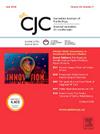儿童和成人感染性休克的机械循环支持:不同但相似!
IF 5.8
2区 医学
Q1 CARDIAC & CARDIOVASCULAR SYSTEMS
引用次数: 0
摘要
虽然体外膜肺氧合(ECMO)用于严重脓毒性休克患者的循环支持始于 20 世纪 80 年代末的新生儿和儿童,但对于患有难治性脓毒性休克(RSS)的成人,ECMO 仍是一种有争议的治疗方法。这主要是由于脓毒症的主要血流动力学反应存在差异。新生儿和年幼儿童的主要血流动力学反应是心室衰竭,称为低心排血量综合征(LCOS),而青少年和成人则主要是血管收缩性休克。ECMO 是治疗心源性休克的有效方法,即使是败血症引起的心源性休克,其存活率也在 40%-70% 之间;然而,血管瘫痪性休克需要使用血管加压药,而不是 ECMO,因此这些患者使用 ECMO 的存活率很低 (本文章由计算机程序翻译,如有差异,请以英文原文为准。
Mechanical Circulatory Support for Septic Shock in Children and Adults: Different But Similar
Although extracorporeal membrane oxygenation (ECMO) for circulatory support in patients with severe septic shock commenced in newborn infants and children in the late 1980s, ECMO has remained a controversial treatment for adults with refractory septic shock (RSS). This is fundamentally because of differences in the predominant hemodynamic response to sepsis. In newborn infants and very young children ventricular failure, low cardiac output syndrome (LCOS) is the major hemodynamic response whereas adolescents and adults mainly have vasoplegic shock. ECMO is a very effective treatment for cardiogenic shock even shock caused by sepsis, with a survival that has varied from 40% to 70%; vasoplegic shock, however, requires vasopressors rather than ECMO, and hence survival of these patients with ECMO was poor (< 20%). However, since the early 2000s, sepsis- induced cardiomyopathy (SCM) with ventricular failure (identical to LCOS in children) has been increasingly described in adults, and the occurrence of cardiogenic shock caused by septic shock is treatable with ECMO. In the last 6 years, increasing publications of series of adults with RSS and cardiogenic shock receiving ECMO and ∼70+% surviving has led to increased use of VA ECMO for RSS.
求助全文
通过发布文献求助,成功后即可免费获取论文全文。
去求助
来源期刊

Canadian Journal of Cardiology
医学-心血管系统
CiteScore
9.20
自引率
8.10%
发文量
546
审稿时长
32 days
期刊介绍:
The Canadian Journal of Cardiology (CJC) is the official journal of the Canadian Cardiovascular Society (CCS). The CJC is a vehicle for the international dissemination of new knowledge in cardiology and cardiovascular science, particularly serving as the major venue for Canadian cardiovascular medicine.
 求助内容:
求助内容: 应助结果提醒方式:
应助结果提醒方式:


